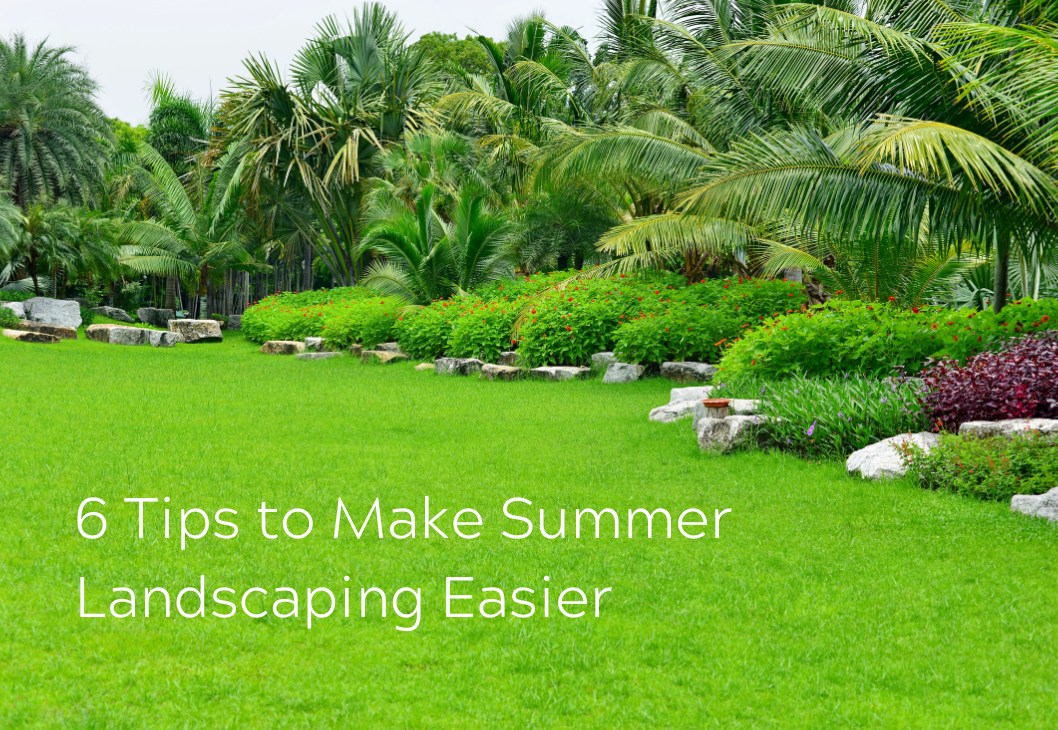
It’s common wisdom that well-designed landscaping improves curb appeal and increases your home’s value. But many people aren’t sure where to start, and if gardening isn’t your passion, the sheer amount of work can seem daunting. Here are easy six ways to reduce the effort it takes to get stunning and valuable landscaping this summer around your home in The Bahamas.
1. Replace high-maintenance plants with native species.
You'll want plants that require the least amount of work to look beautiful. Native tropical plants require fewer resources than non-native plants — less water, fertilizer, and effort — because they have already adapted to growing in our tropical climate. They’re less likely to need pesticides because many of them have developed natural defenses. That means you won’t have to work as hard for a massive boost in curb appeal. Additionally, native plants turn your home into a thriving part of the ecosystem. They’ll attract pollinators like honeybees and butterflies, and they’re also better for our native birds. Check out Rocky Farms Nursery or Fox Hill Nursery for more information on native plants.
2. Rethink your watering schedule.
When is the best time to water your lawn and landscape plants? Turns out, it’s early in the morning. Morning watering gives your plants the water they’ll need throughout the day while saving water and preventing plant diseases. By comparison, an afternoon schedule wastes a significant amount of water due to evaporation, while a nighttime schedule leads to resting water around the roots of the plant, which encourages rot and other illnesses. Those are problems you’ll have to solve later to keep your landscaping looking nice, which means more work for you. For those reasons, morning watering is best.
3. Install a drip system.
Don’t want to get up early to do your morning watering? Invest in a set-it-and-forget-it irrigation system to do it for you. A drip system slowly and evenly delivers water to the bases of all your plants, conserving water and, once it’s set up, a lot of time and energy. You can pair your drip system with automatic sprinklers for your lawn and never worry about watering again. Just program the watering schedule you want and turn the controller on, and all of your plants and your lawn on the system will receive the water they need.
4. Got grass? Mow high and leave the clippings.
Many people think that by mowing the lawn short, you’re lengthening the time you have between mowings. However, remember that your lawn is alive, and by cutting your grass very short, you’re increasing the stress on the plant — which may result in high-maintenance consequences. Grass that has been cut too short is more likely to turn brown, fall prey to pests or disease, and may even die in patches where the mower blade burnt it. You’ll spend much more time and money trying to repair those problems after they occur versus mowing your grass a little higher and more frequently.
It’s also a good idea to leave the clippings on the lawn. It might seem messy, but grass clippings fertilize your lawn by adding nitrogen and important nutrients back into the soil. Think about it this way: using a mulching mower will leave the clippings on the lawn so you can avoid raking and bagging and having to regulary fertilize.
5. Mulch it up.
Mulch is a layer of organic material you lay over the soil in your planting beds to keep the soil cooler, retain water, and add nutrients. Another great benefit? Mulch helps prevent weeds from growing which means less time spent weeding and more time enjoying your outdoor space. Just make sure that you place your mulch correctly and a thick enough cover. Sometimes if the mulch is too close to the base of your plants and trees, it may encourage rot because it holds moisture. To avoid this, it’s best to leave at least three inches of space between the stems of your plants and the mulch. This will also provide better air circulation and prevent insects from nesting at the base of your plants.
6. Add some shade.
Both you, your plants and your house will benefit from adding some shade to your outdoor space. You can make this project big or small. Try adding some shade trees on the southern side of your house to shade it from the midday and afternoon heat. Build a large, ornate trellis with climbing vines, or something simple like using a shade sail in your patio area. Just a little bit of protection from the blazing afternoon sun will help your plants thrive with less attention, making your life easier. Another upside? You'll enjoy using the shaded space for picnics, get-togethers, outdoor activities, and more.
Curb appeal on point? Let’s talk listing.
Summer is a great time to sell a home. Your landscaping is looking great, and there are more buyers in the market for a new house. If you’re thinking about selling your home this summer or fall, click the button below.




.png)
